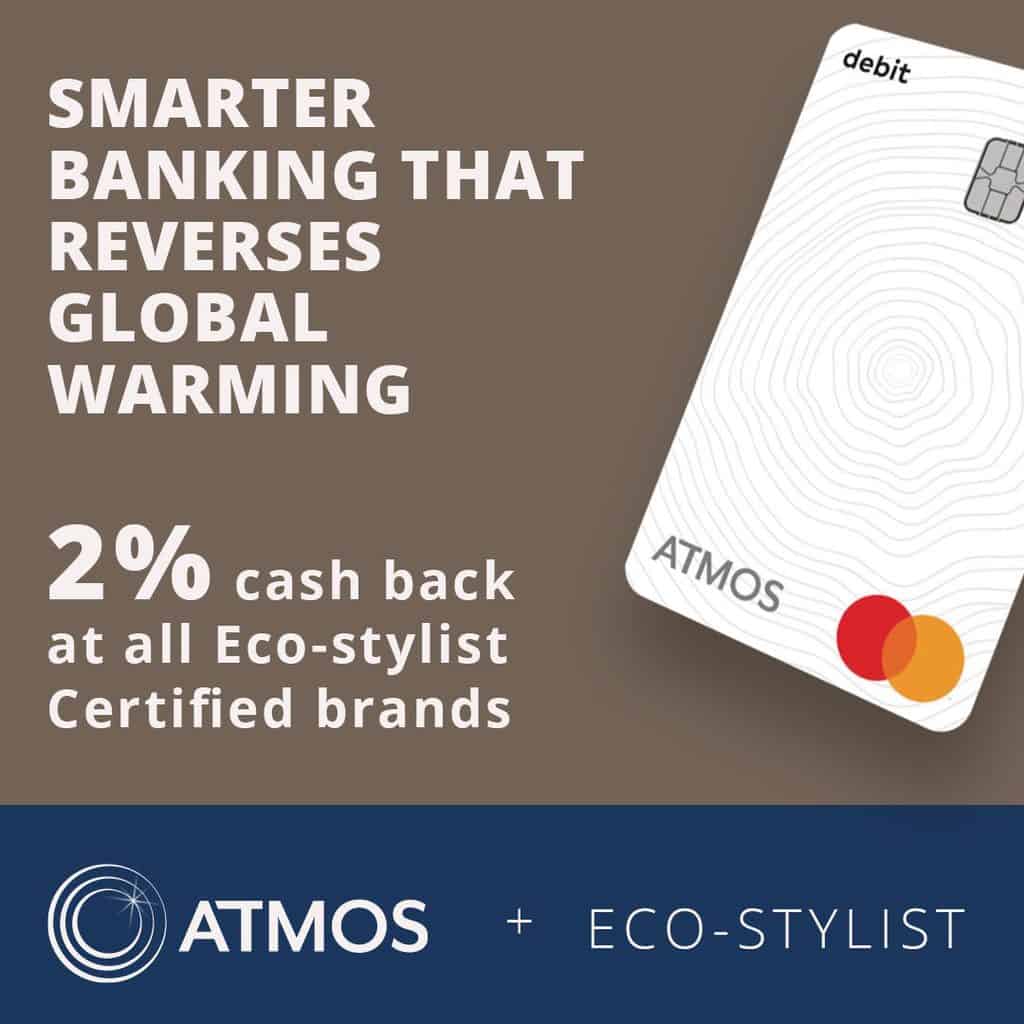
- What is Nike? Is Nike a footwear, apparel, or sportswear brand?
- What is the issue with the growth mindset?
- Nike’s Overall Sustainability Strategy
- Nike’s Environmental Sustainability
- Nike’s Circularity – Move to Zero
- Is Nike Ethical?
- How Transparent Is Nike?
- Does Nike Engage in Fair Labor Practices?
- Nike’s Eco-Stylist Rating
- Diversity & Inclusion at Nike
- Do We Trust Nike?
- Does Nike Inspire Us?
- Is Nike Fast Fashion?
- Is Nike Sustainable? Rating: We Don’t Recommend
- Where Can You Find More Sustainable Alternatives to Nike?
What is Nike? Is Nike a footwear, apparel, or sportswear brand?
Nike, more than a fashion retailer, is a multinational lifestyle brand that inspires athletes and people who are into fitness and leisure, through innovative products, experiences, and services to live their most active, go-getter lives.
Founded in 1964 by Phill Knight and Bill Biserman, it is based out of Oregon, USA. As of February 28 of 2023, the company’s revenue was USD 5.3 billion. According to Reuters, Nike has seen strong demand for its sneakers but is still struggling to find balance with its apparel, which they are still selling at discounted prices due to excess inventory.
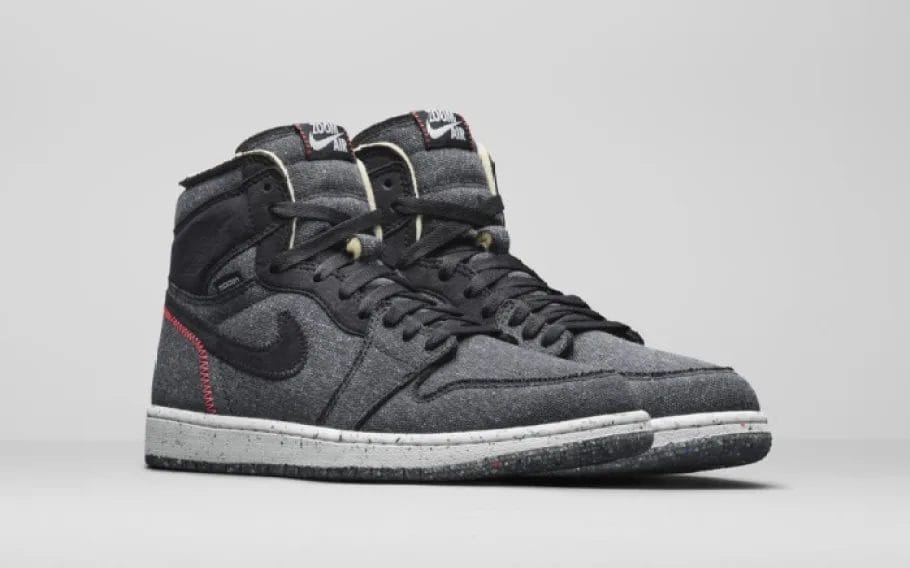
Nike combines a usual wholesale model with strong direct distribution, including e-commerce. As of 2022, 62% of their sales came from footwear, while apparel accounted for 29% of their pie. Their most successful sneakers are, of course, Jordans. Their biggest market is North America, followed by Europe, the Middle East, and Africa. As of 2020, they were selling over 780 million pairs of shoes.
As a big player in the footwear and apparel industry, Nike is also responsible for a big chunk of the 700 million tons of CO2-eq the footwear sector was producing in 2018, according to a Quantis report. More than 60% of those emissions come from raw material and manufacturing stages. The majority of shoes, especially sneakers, are produced with harmful materials like plastics, glues made with PFAs, and unsustainably sourced leather. Many of these are not easy to repair, disassemble or recycle. 44% of consumers in the UK simply bin them, once they are done with their shoes. In 2018, it was estimated that of the 24.2 billion pairs of shoes produced every year, 300 million pairs are thrown out.
These climate, waste, and social issues can all be traced to the economic model that the fashion industry and public multinational companies like Nike operate under the capitalist growth model.
What is the issue with the growth mindset?

According to writer and researcher Jason Hickel, a proponent of Degrowth, growth in the capitalist economy “is about the expansion and perpetual accumulation of capital. To do that requires the exploitation of labor and extraction of the living world. And crucially it requires taking more from labor and nature than you give back in return. It cheapens human lives and nonhuman lives. This system generates perpetual crises of social inequality and ecological breakdown.”
And our current breakdown ripples through climate, deforestation, and water systems. As Jason notes, “life on this planet depends on a balance of interlocking geological systems. So when we change these systems beyond a certain boundary they become unstable and break down. Which is the situation we are in right now.”
It is important to note that this social and climate emergency we are living through now stems from colonialism because, as Hickel explains, it is the richest countries of the Global North that have exceeded their fair share of planetary boundaries. But it is the countries in the Global South that are suffering the consequences. This is so because the resources, culture, and labor necessary to feed the excessive consumption of the global North are extracted from the Global South.
In fact, in 2010, 98% of climate breakdown happened in the Global South, whereas 92% of the causes came from countries in the Global North, where only 1% of climate-related deaths happened. The damages done in the Global North 13 years ago were the equivalent of 571 billion dollars, and are projected to be 954 billion by 2030.
Nike’s Overall Sustainability Strategy

In order to combat their negative environmental impact, Nike has been working on the ecological & material innovation side of sustainability for 20 years.
Now, according to their Chief Sustainability Officer, Noel Kinder, they are focusing on 13 targets across the board. What’s interesting is that these targets are not to be achieved by a siloed sustainability team. On the contrary, Kinder made sure that there were people on each team’s leadership responsible for embedding sustainability targets and purpose into the operations and indicators of each department: from design and innovation to marketing and logistics, everyone at Nike has a role to play in making the company a force for good. Indeed, he attributes the success of Nike’s strategy to the fact that its leadership is not centralized and its team members are all excited to contribute their expertise to making a good impact.
He says, however, that the brand’s biggest challenges are around scale, and we agree. As a big brand that moves a lot of products, finding a balance between its material innovations and its growth is critical. Kinder also alluded to the challenge of working not only with their team and factories but also with their extended supply chain and the community at large. Finally, they are concerned with finding solutions fast enough, because we are all on a tight timeline in this climate emergency.
Nike’s Environmental Sustainability
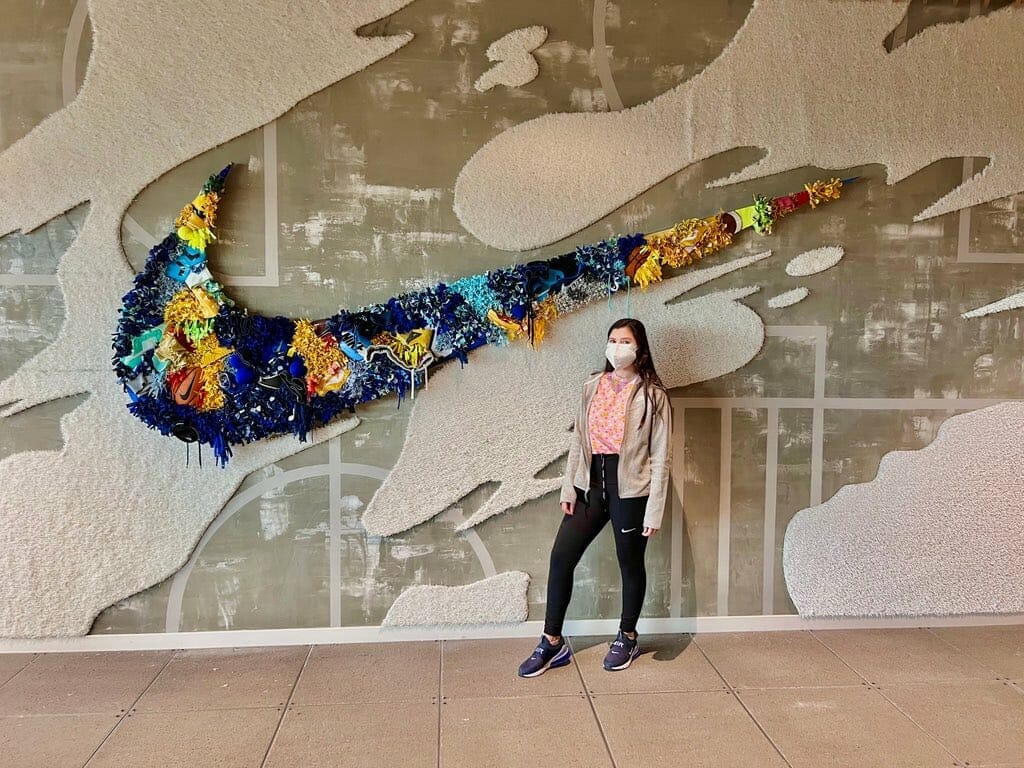
Even though Nike has been working towards material innovation and lowering greenhouse gas emissions, its scale makes it hard for these initiatives to have the systemic impact we need at this time, to face the ecological crisis we are in.
They also do not demonstrate understanding or commitment to the intersectional nature of environmental sustainability in policies or goals, especially in the Global South, where, as we explained before, the climate crisis has impacted the most people and ecosystems.

Water Stewardship
Nike does not share their overall water footprint, but they do show their commitment and actions toward protecting our finite water resources. They say that their freshwater footprint is directly tied to material sourcing and manufacturing at 91%.
Since growing cotton accounts for 69% of their water footprint, they have strategies to reduce their water consumption at this stage. They are using organic, recycled, and BCI cotton where possible.
They are also doing restoration projects where pesticides and monoculture have damaged the land to improve soil health and community access to water. As of today, Nike has “completed two water restoration projects in collaboration with The Nature Conservancy. In India, they converted 30 hectares of farmland to drip irrigation, benefiting 75 farmers (17 of which were women). In Gayini Nimmie-Caira, 84,000 hectares of biodiverse wetlands and floodplains in Murray Darling, Australia, is now legally registered as a conservation area.”
As of 2020, they had achieved a 25% reduction in freshwater usage per kg in textile dyeing and finishing. They also restored 13 billion liters of water through their watershed projects in extended cotton supply chain communities.
They also measure factories’ freshwater withdrawals and wastewater quality through self-reported data. And make sure the factories are committed to using ZDHC guidelines for wastewater. In 2015, Nike noted that 99% of the 811 facilities reporting wastewater to them were compliant.
Chemical Use
Nike has had a Restricted Substance List (RSL) since 2001 and launched the Chemistry Playbook in 2018. Their suppliers must comply with these restrictions. And the material that fails their RSL test is considered defective and prevented from entering production. However, they have not made any moves to phase out C6 or C8 from their waterproof garments or shoes.
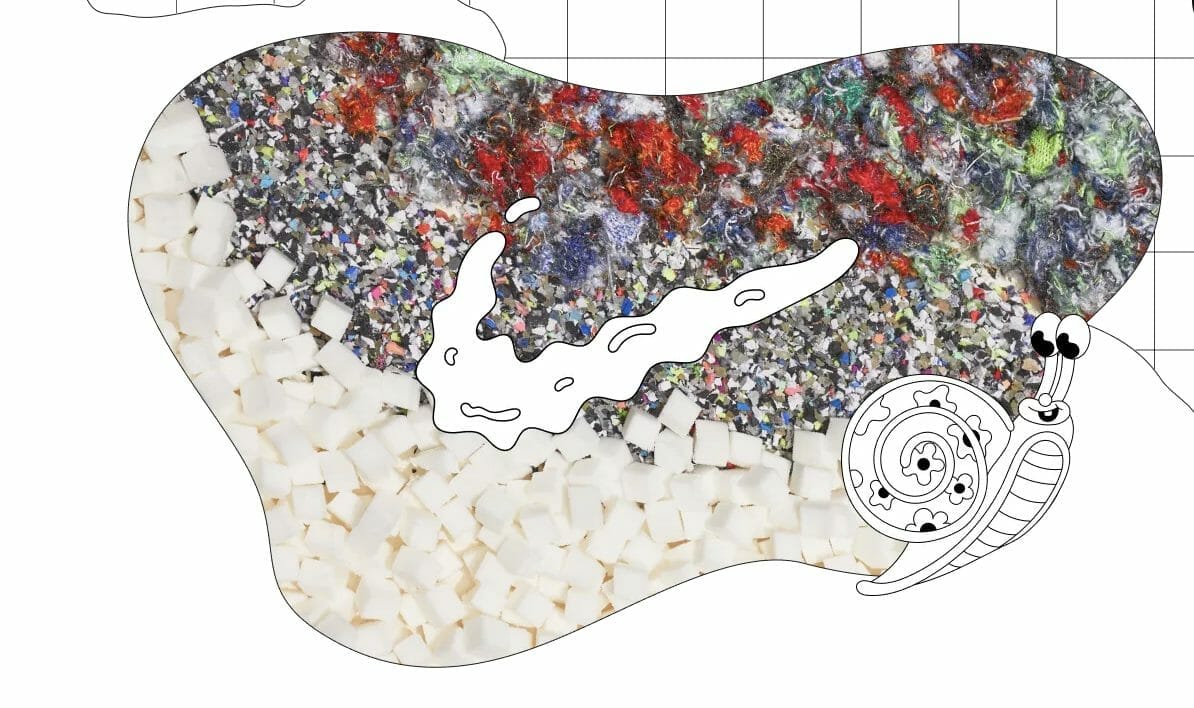
Greenhouse Gas Emissions
According to their Chief Sustainability officer, Noel Kinder, 80% of Nike’s carbon footprint stems from the resources (energy included) that it takes to make the materials that go into their products. This means that the majority of their emissions are way down in their supply chain in stages such as the production and processing of raw material, be it natural or synthetic.
In 2022, they emitted 75,768 metric tons of CO2 only in their owned facilities (38% less than in 2021). Further, they reduced 182,611 metric tons of CO2 by using 39% environmentally preferred materials.
Currently, they aim to reduce 70% of greenhouse gas emissions in their factories by using 100% renewable energy. They are at 93% so far. They are also taking actions to reduce their Scope 1 & 2 emissions by 65% and Scope 3 emissions by 30%. Nike is expected to reach these targets by 2030.

Additionally, Nike is making strides in the transportation sector by working with their partners to scale alternative fuels and use more water transportation. While biofuels become more widespread, they are offsetting the carbon impact of their e-commerce orders transportation in the US and Europe with EFM and WeForest.
In their owned spaces, they have been working for a while to make them more energy-efficient. For example in Europe, Canada, and the US, renewable sources provide all energy at Nike-owned and operated facilities.
Nike’s Raw Materials & Sustainable Material Innovations
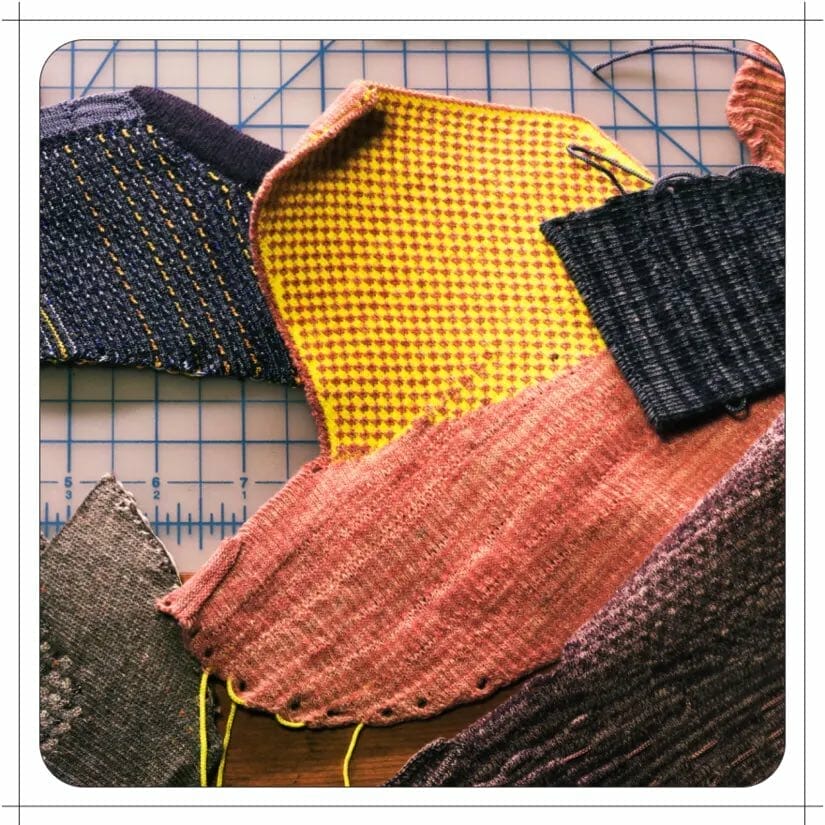
Nike’s material innovations have taken different shapes over the years, the latest being the Space Hippie, a shoe made of waste as feedstock (50% by weight). The upper is made from post-consumer waste and the sole from industrial waste.
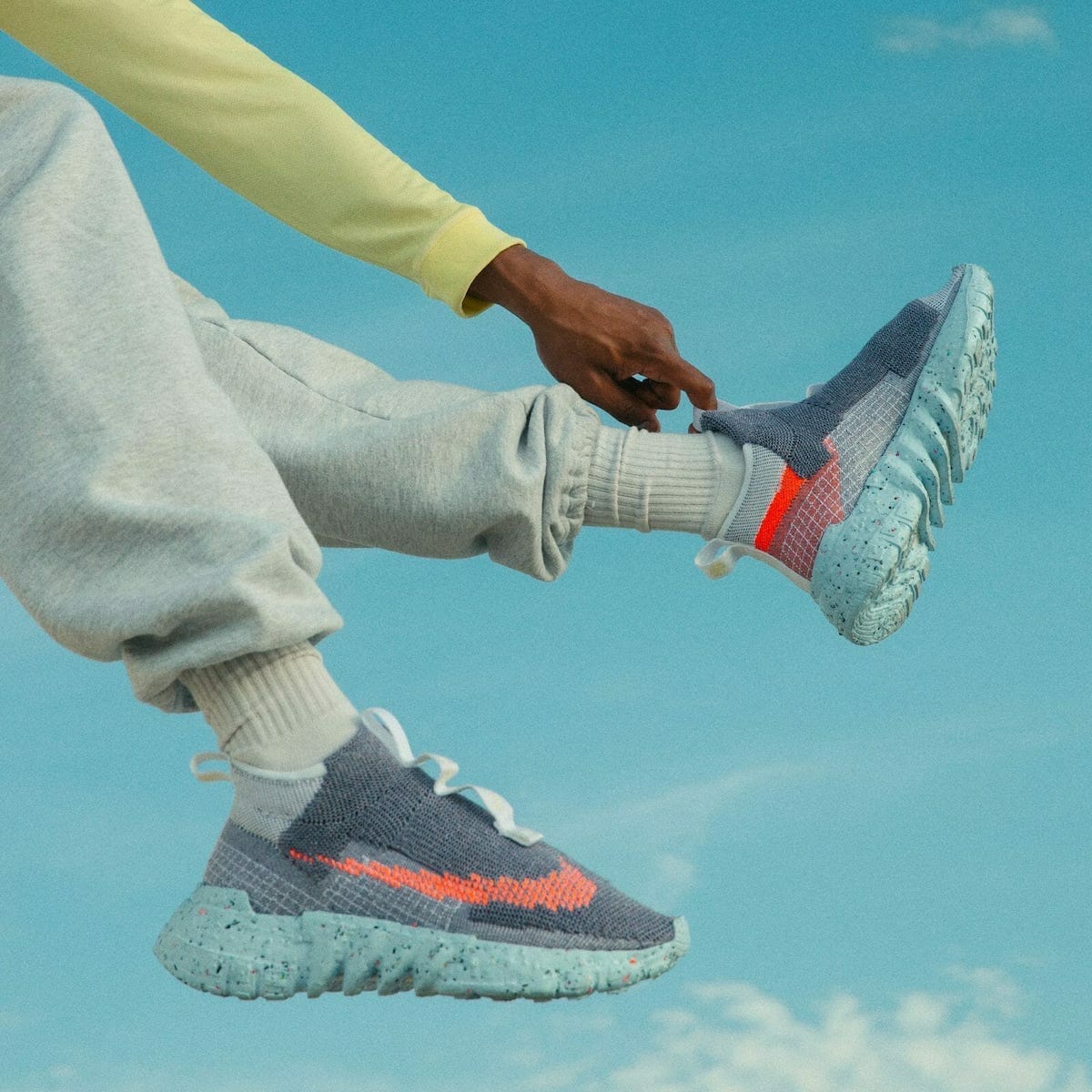
When it comes to footwear materials, they are focusing on better alternatives to polyester, rubber, and leather. For their apparel, they are using more organic, recycled, or BCI cotton and are decreasing virgin plastic usage. The usage of these better textiles has not yet reached 50% of their material intake, though.
They have, however, developed a new material called Nike Forward, made from needle-punched layers. Their inaugural collection reduces their average carbon footprint by 75%, compared to their traditional knit fleece. This material can be found on trainers, hoodies, sweatpants, bags, and tops, amongst others. The pieces that are made from this come with a care tutorial that shows how to make it more durable.
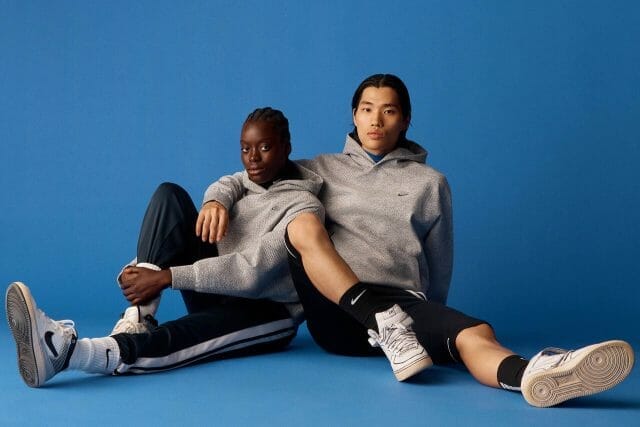
Another innovation is the Nike Air soles. Since 2008, the soles are composed of at least 25% recycled manufacturing waste, in facilities powered by 100% renewable energy. 90% of the waste materials from the air soles are turned into new cushioning systems.

The Nike Flyknit is a fabric that produces 60% less waste than traditional footwear upper manufacturing. Each shoe contains 6-7 plastic bottles that make one upper.
Flyleather is their alternative to virgin leather, made by binding 50% recycled leather fibers with synthetic ones, using a water-powered process. It is 40% more lightweight than full-grain leather.
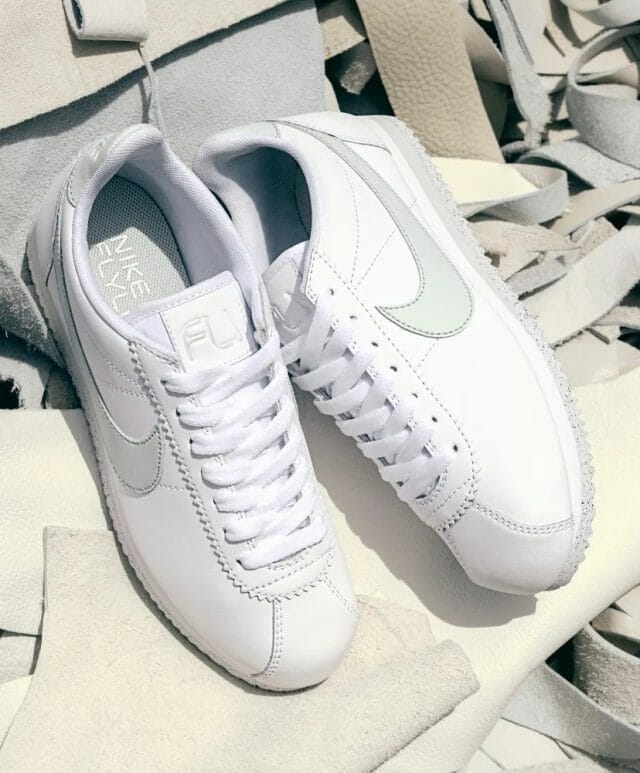
According to Remake, 3 companies, including Nike, have demonstrated a decrease in the use of virgin plastics (not just an increase in recycled polyester content). In Remake’s report, Nike is cited to have claimed to be the “highest user of recycled polyester in the industry (the equivalent of one billion plastic bottles) and they increased rPET usage from 23% to 33% of total polyester usage.”
However, RPET is not a silver bullet. It depends on its use and the way we care for the products. It takes approximately 70 million barrels of oil a year to produce the virgin synthetic items we wear. Overall, only 5% of plastic is recycled and 35% of the world’s ocean microplastics come from laundering our polyester clothes. To learn more check our guide on how to reduce microplastic pollution.
They also use recycled nylon from carpets and fishnets. This recycled yarn reduces its emissions by 59%, compared to virgin nylon.
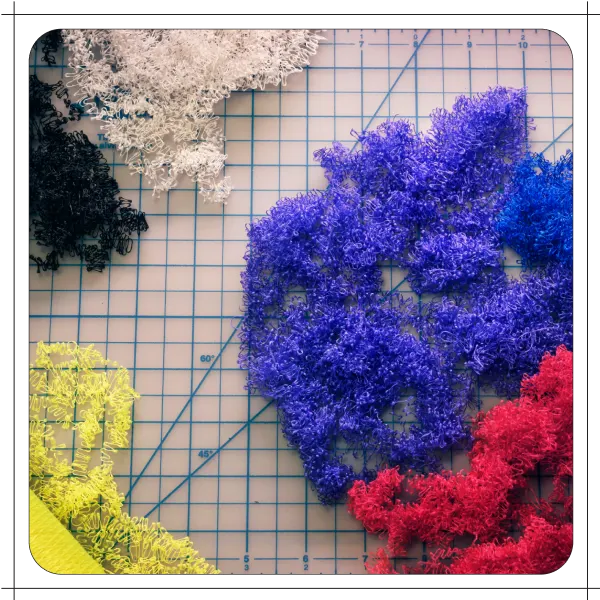
Achieving a low-carbon shoe has meant Nike had to leverage the long standing relationship they’ve had with their suppliers, 80% of which have been co-creating with them for over 15 years. This is how the Supplier Climate Action Program was born because one of their suppliers wanted to have science-based targets to ensure they were lowering their environmental footprint and now the rest are either committed to or are on their way to doing so.
Not only that, they have had to collaborate with outside entities and competitors. One example of that is the work they are doing in Vietnam to bring about renewable energy for their extended suppliers. To achieve this, they have partnered with USAID and fellow companies that also manufacture in the region to signal to the government that they all want more access to renewable energy to reduce carbon emissions and resource depletion.
Nike’s Circularity – Move to Zero

The company may be taking steps to execute its circular vision, by making circular solutions to minimize its contribution to landfill waste, but the scale of their initiatives is not comparable with the humongous size of their company. They also do not have a repair program.
However, they make efforts to reduce waste at manufacturing with things like Nike grind or fly leather. As mentioned above and they have a series of initiatives on their Move to Zero like:
- Where To Recycle + Donate
Reuse-a-shoe is their consumer takeback program for recycling end-of-life footwear. For now, it can only be found at certain US Nike stores. Not in Europe or the Global South.
- Refurbished
They receive and hand-inspect gently worn gear and footwear, which they resell at select Nike stores.
- Recreated
In 2022, they introduced this program whereby they turn locally collected vintage and dead stock products into new designs. For now, it has three silhouettes that are sold exclusively at The Grove store.
A Sustainable Packaging Solution

With Nike’s Space Hippie, they realized they needed to innovate on the packaging, too. One of the ways Nike achieved this was by having the shoebox be its container, instead of shipping a box within a box. That’s how the Nike One Box was born. It eliminates 51% of the waste for a single online order, while still protecting the precious cargo inside (they proved it by doing the beating and crushing tests). They also cut down on tape usage by closing the box with an adhesive strip.
Is Nike Ethical?
Not very, it has been the object of human rights violations and scandals as early as the 1990s. Although, it should be stated that this is an example of a wider fashion system built upon the oppression of the global majority.
As of March of 2023, for example, BOF reported that garment workers were demanding unpaid wages from Nike. A group of 20 garment workers’ unions in Cambodia, India, Indonesia, Pakistan, and Sri Lanka, with the Asia Floor Wage Alliance and Global Labor Justice-International, submitted a complaint against Nike to the OECD.
It alleges that they violated the Multinational Enterprises Guidelines by incurring months of wage theft, which violated the worker’s rights to favorable working conditions, social security, and protection from gender discrimination. They also say that despite calls to do so, the brand did not engage with any union organizations to solve the issues. “According to a report by the Asia Floor Wage Alliance and Global Labor Justice-International Labor Rights Forum, Nike could have paid back wages owed to workers nearly 2,000 times over with the money it spent on stock buybacks.” According to a report published by The Fashion Law, by paying 20 cents more on a T-Shirt, brands could pay garment workers a living wage. That begs the question then, why doesn’t Nike?
How Transparent Is Nike?
They have a manufacturing map, where they aggregate their suppliers with the name, address, location, type of product made, percentage of women and migrant workers, average garment worker age, and several employees.
They also show their FLA reaccreditation report on their impact website. But they don’t directly address subcontracting issues. Even with the number of facilities Nike operates out of, it is difficult to pin down who is engaging in what, but overall their goals and standards of accountability are fairly clear. And each Nike contracted factory is subject to an audit and assessment every one to three years depending upon their previous compliance record.
Nike talks about engaging with strategic suppliers on social and environmental issues, but who are they? What percentage do these make? How far down their supply chain are they doing ecological and social work? Is this their Vietnam manufacturer that comprises 30% of its apparel production and more than half of its footwear? Or is it its cotton growers in India and Australia? They don’t say.
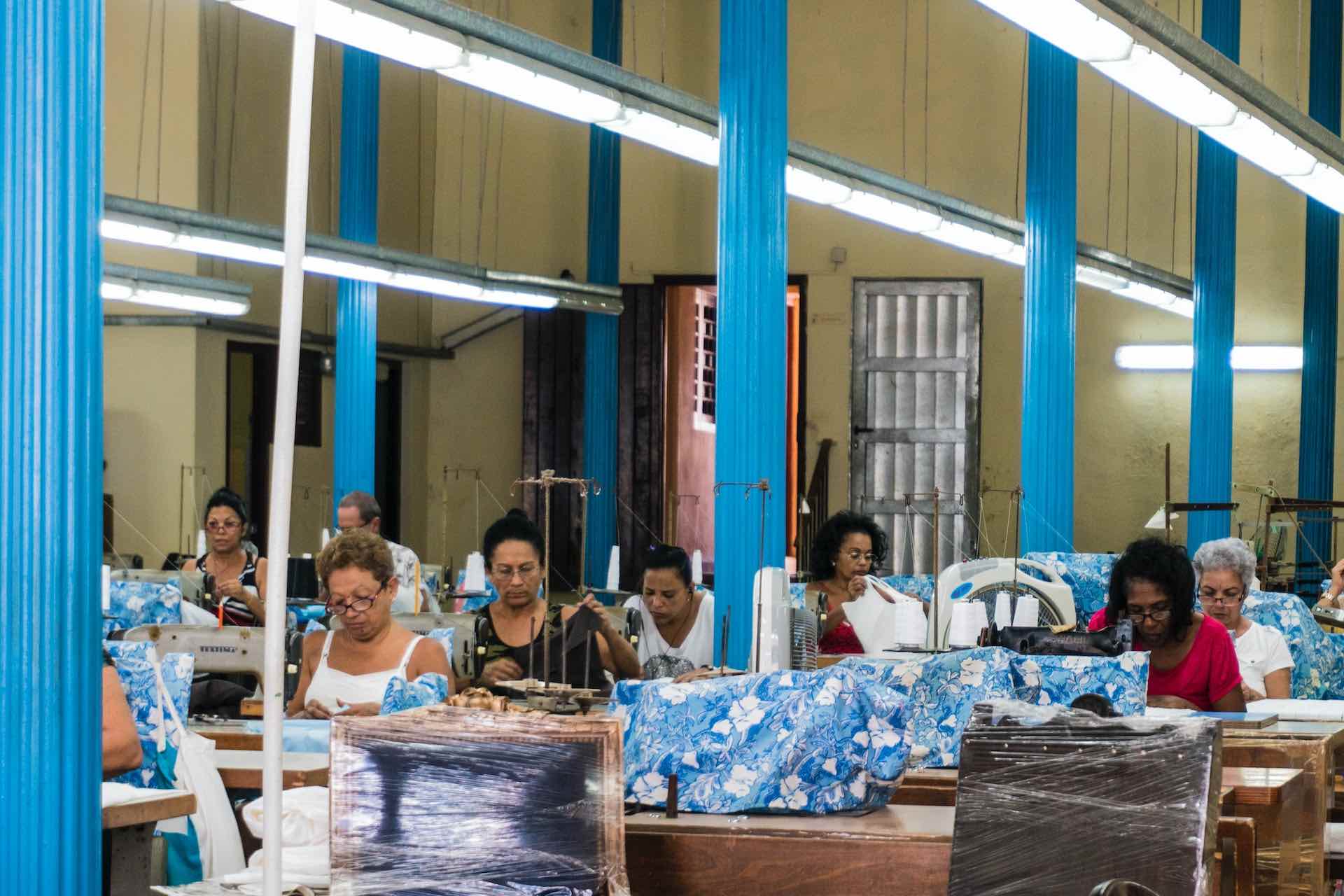
Does Nike Engage in Fair Labor Practices?
Nike does not to this day disclose its team or garment workers’ wages. Nor does it state if it is paying them a living wage. But they are working with Anker Methodology to calculate the living wage in Indonesia. They also plan to use GLWC in other regions where it is available. They say this effort will help them have approximately 80% of strategic suppliers in all regions compare their wages against an updated and more credible living wage. This is left to be seen.
As we said earlier, Nike has been accused of wage theft, child labor, and union ignoring, among others since the 90s and today, in 2023, their treatment of garment workers hasn’t gotten that much better, even though they no longer incur in child labor.
The multinational also has a publicly available code of conduct and discloses findings of risk assessments of the FLA. They also have worker engagement tools outlined and a Speak Up Portal where anyone can report a concern.
To advance in making better conditions for their partner’s workers, 90% of which they have worked with for over 15 years, Nike also designed their Code Leadership Standards. These contain detailed requirements on how suppliers must respect the rights of workers to freely associate. However, there is no evidence of worker wellbeing programs at Nike, beyond sporadic training.
Nike’s Eco-Stylist Rating
How We Rate
We rate brands as failed (we don’t recommend) or passed (we recommend), with passing brands rated on a scale from Certified to Silver to Gold. To do so, we consider their transparency, ethical labor practices, and ecological sustainability, among other factors we will expand on below.
Diversity & Inclusion at Nike
Currently, Nike employs 80,000 people directly. 51% of their global corporate workforce are women. 45% of Vice Presidents are credentialed in Inclusive Leadership education. 38.8% of Nike’s U.S. corporate workforce are U.S. racial and ethnic minorities.
Their goals are that 100% of Vice Presidents are credentialed in Inclusive Leadership education. They also are looking to invest $10M in Historically Black Colleges and Universities (HBCUs) and Hispanic-Serving Institutions (HSIs) to continue creating pathways for more diverse talent.
In 2023, Nike announced $8.9 million in new investments in 53 national and local nonprofit organizations focused on education innovation, economic empowerment, and social justice. Three new national grantees include BUILD, Fearless Foundation, and the National Coalition on Black Civic Participation. Since launching in June 2020, they have invested $28.9 million with national and city-specific partners through its Black Community Commitment.
The Serena Williams Design Crew (SWDC) is a six-month apprenticeship program, launched in 2021 to diversify talent within the design industry. Ten New York designers collaborated with Nike teams and Serena Williams to create the Serena Williams Collection. Seven designers from the first cohort accepted full-time roles with the company.
Also, Women in Nike (WIN) creates opportunities and pathways for retiring or retired WNBA athletes. The 24-month journey is designed to provide relevant and dynamic work experience.
NIKE also has a Diverse Supplier Development Program, The Academy, that is designed to amplify and accelerate the capabilities of its diverse suppliers.
Across Nike, Jordan Brand, and Converse, they are creating a future where everyone can “live, work and play”. They collaborate with more than 100 community partners to bring research-backed, inclusive play- and sport-based programs to the next generation, focusing on expanding opportunities for girls.
Their goals are to have 50% of girls participating in play and sports programs they support. Nike is designating $125M to support organizations working to level the playing field and address racial inequality and make a 2% investment of the prior year’s pre-tax income to drive a positive impact in communities.
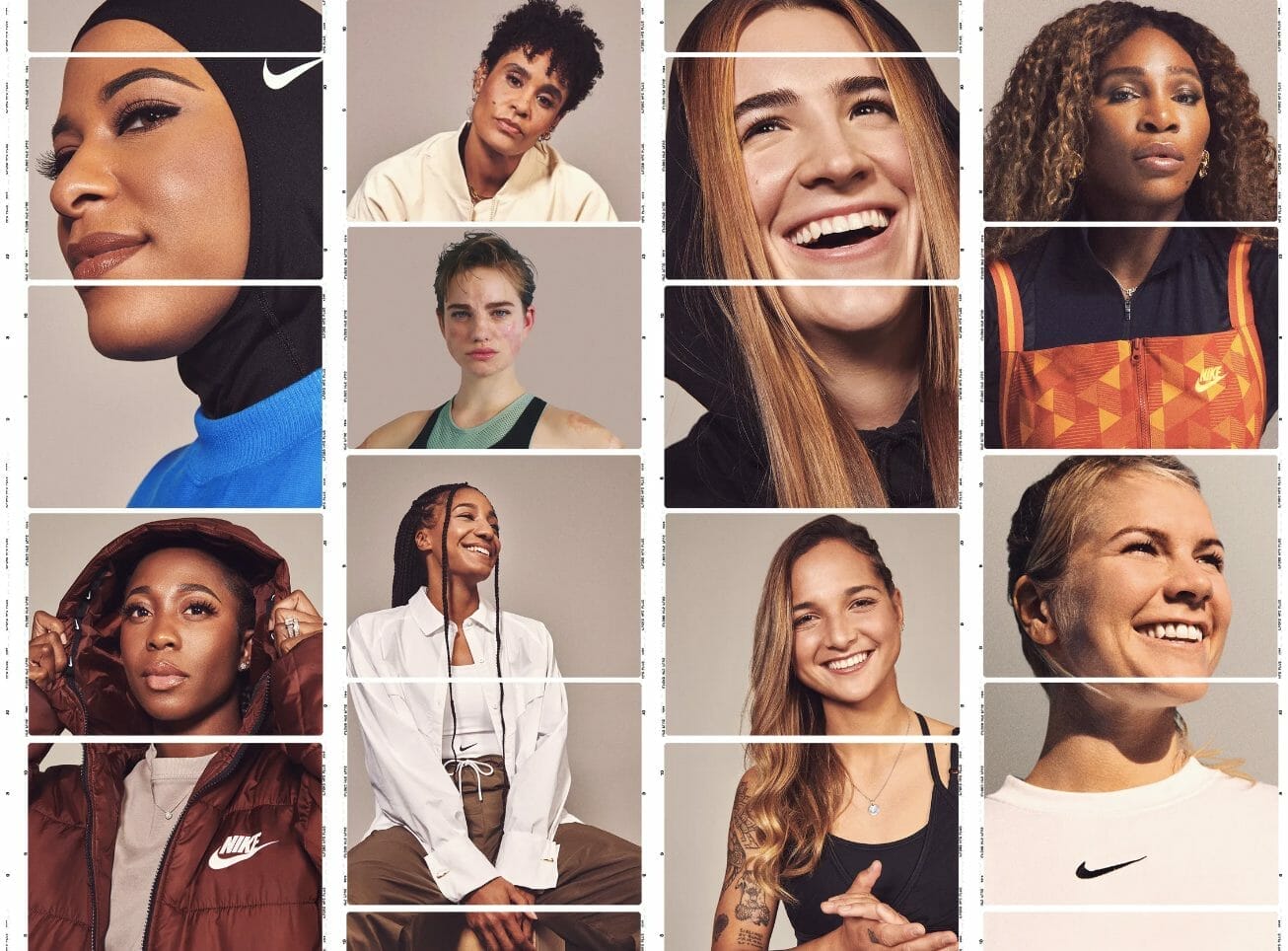
Do We Trust Nike?
This is a hard one. Nike has been improving its transparency over the years, and it has certainly done a lot in terms of supply chain mapping and inspection transparency. However, it has a long way to go in terms of showing raw material suppliers and how it treats or pays its extended supply chain workers. So it feels like Nike might be claiming things that are true but omitting to communicate other labor and social issues, which to us can seem a bit sketchy.
In the latest news, Nike was accused of greenwashing in a class action lawsuit, alleging that the brand’s sustainability claims are misleading to consumers looking to buy better. The jury is still out on this one.
Does Nike Inspire Us?
In some aspects yes, in others no. Its material innovations and the way they communicate sustainability, diversity, and inclusion to inspire the broader public and other companies to get behind it are indeed inspiring. It is also inspiring that they have been working on material innovation for 20 years.
What is not inspiring at all is the way they treat workers and how they are still addicted to a harmful growth model.
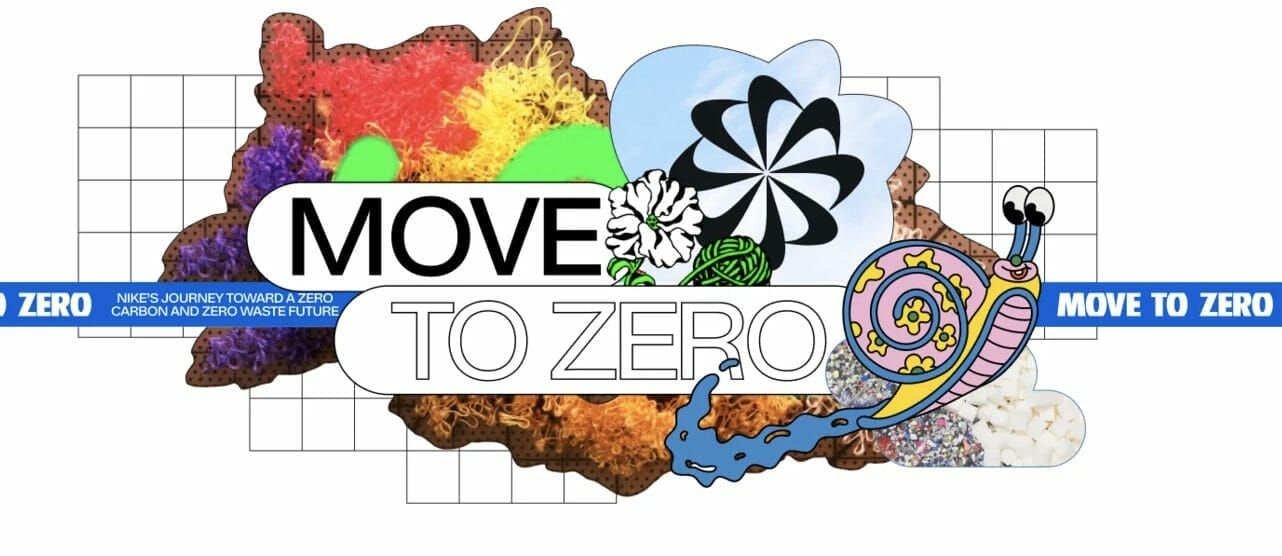
Is Nike Fast Fashion?
Nike is not exactly fast fashion, but it is a multinational company that incurs overproduction and encourages overconsumption. Its sneaker drops are a prime example of this, by ensuring the sneakerheads are always after the latest Air Force model, instead of wearing to end-of-life what they already have, they effectively render the previous ones out of style. Even if the resale market said vintage sneakers are now collector’s items, worth large sums of money, it encourages a culture of excess.
In terms of apparel, in fact, in their 2023 quarter report, they say their earnings were not as high because they are still reckoning with excess inventory that they have heavily discounted. They could learn a thing or two from MTO and other models to avoid overstock that will most likely end up landfilled or incinerated.
Is Nike Sustainable? Rating: We Don’t Recommend
Nike has been working on material innovation for years, but it certainly can do better, especially when it comes to garment workers’ well-being and pay. As a leader in the sneaker and sports industry, if it does, other brands will feel the pressure to do so too.
With the information on the brand’s overall environmental and social practices that we described before, the score the brand gets on our rating is 23/100 and it is divided as follows:
Transparency: 9
Fair Labor: 11
Sustainably Made: 19
DEI: 4
Do We Trust the Brand? -10
Do They Inspire Us? -10
Overall Score: 23
Where Can You Find More Sustainable Alternatives to Nike?
Our Shop. We source 100% sustainable brands, 0 fast fashion, and research brands with consistent criteria. Since we know it can be confusing to split the greenwashers from the companies that make an impact, we made a directory of the best ethical and sustainable brands.
For specific brands we recommend as Nike swaps, here are a few great options.
4 Ethical Alternatives to Nike Sneakers
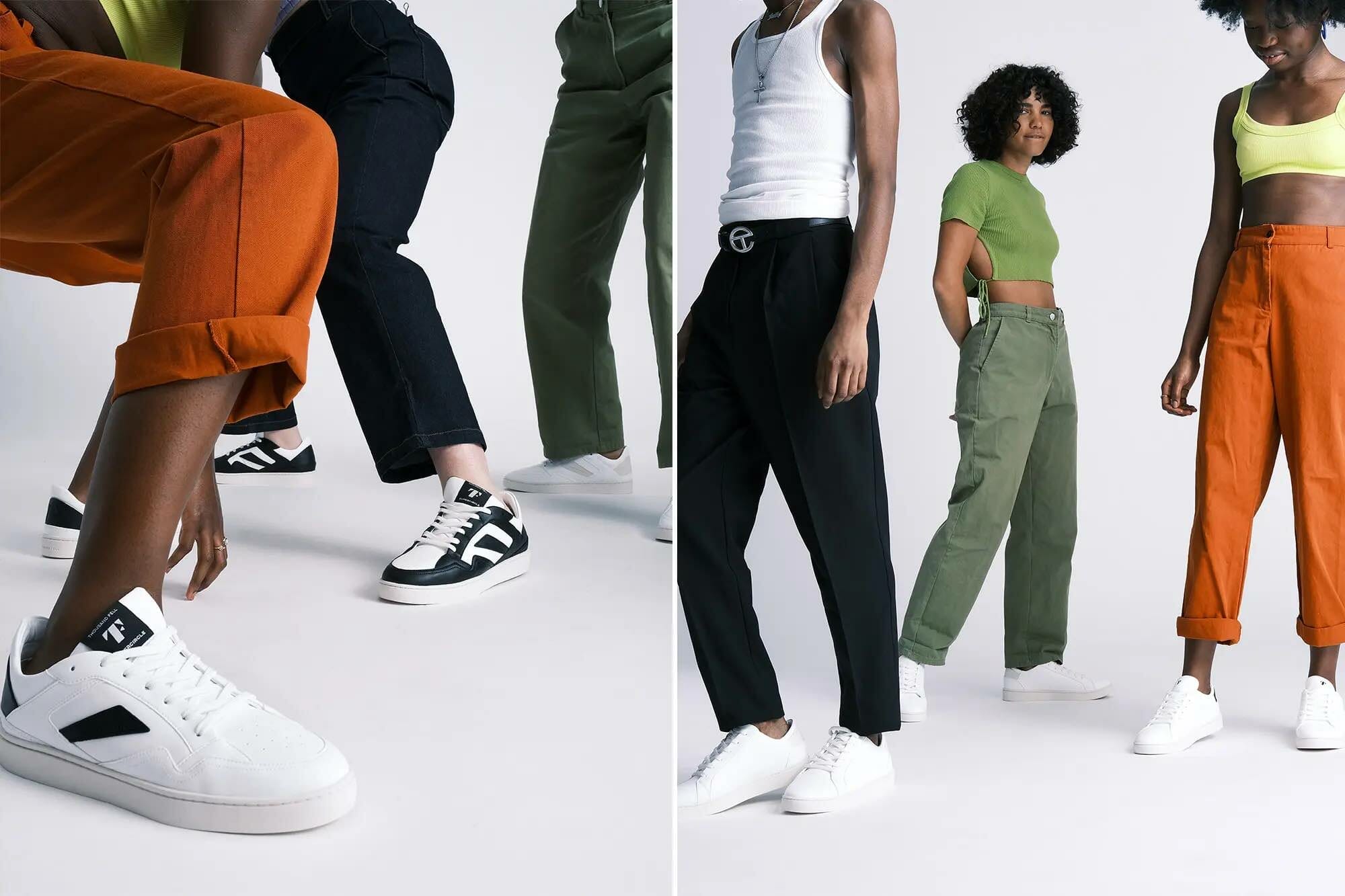
- Thousand Fell makes a great alternative to the Nike Air Force One with its Court sneakers. They’ve also got stylish all-white sneakers and options with a pop of color.
- 8000Kicks: if you like Nike’s material innovations, then check out this brand. Their hemp sneakers are innovative and eco-friendly.
- Koio: if you’re a sneakerhead looking for loud colors and street styles, this is the brand for you. They’ve got the style you love and the ethics too.
- Etiko: if you like Converse shoes then here is a more ethical dupe.
5 Ethical Alternatives to Nike Apparel
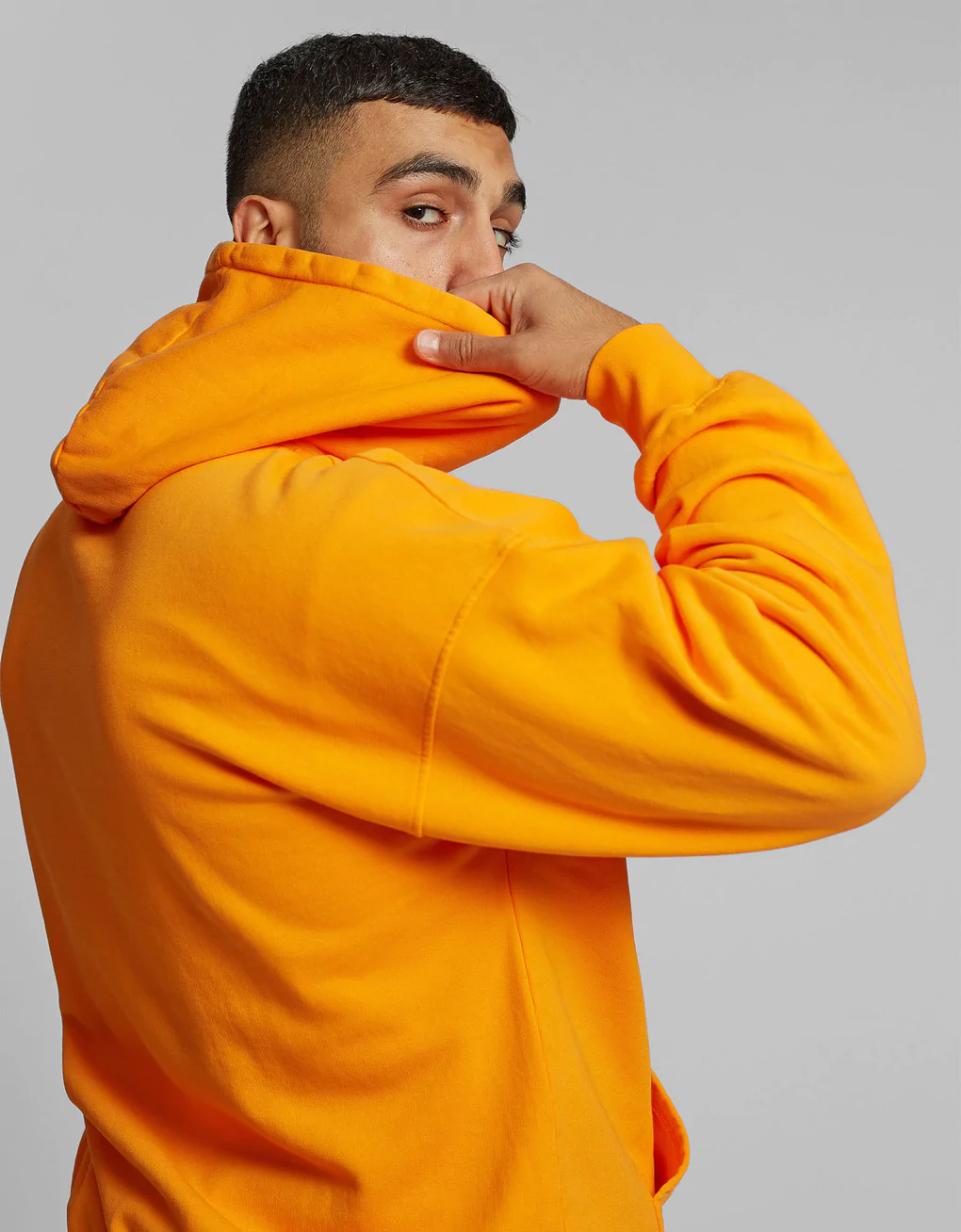
- Wolven is your brand for leggings, yoga apparel, and women’s workout clothes.
- Colorful Standard: if you like Nike hoodies, sweatpants, tees, and shorts, then this is your brand. They have all these clean essential pieces in 40+ colors.
- Pact is here for your general apparel needs like underwear, socks, tees, hoodies, and leggings. All Fair Trade.
- Girlfriend Collective is your go-to for body-positive loungewear, athleisure, and athletic apparel for her.
- AlterX Co. for some really nice T-shirts. They’re made in the USA with hemp and organic cotton, and they give back too!

Adela is a Colombian storyteller, content maker, strategy consultant, & event producer, specializing in sustainable fashion, mental health, and gender issues.





